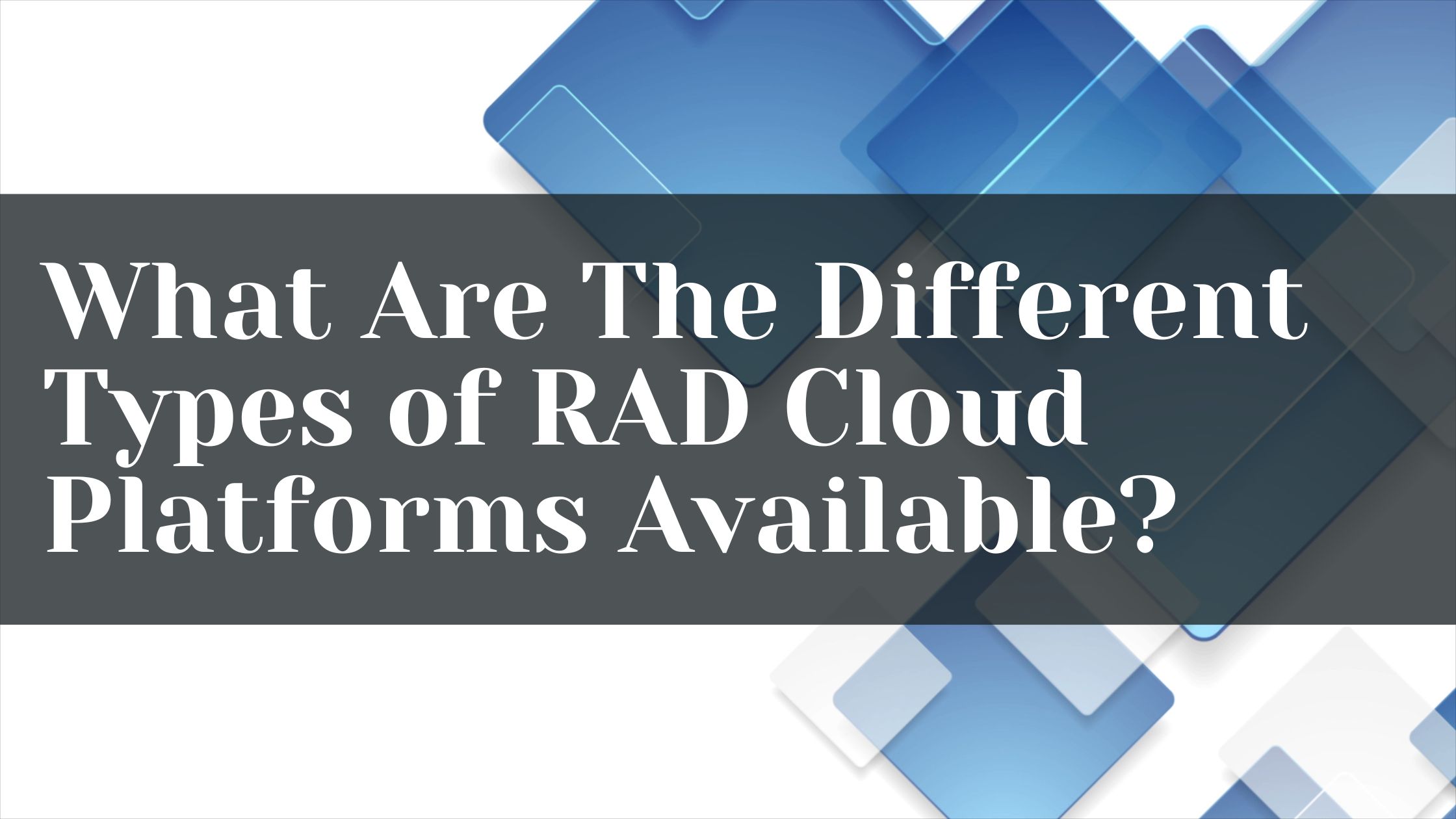Accelerated technological advancements in recent years have revolutionized the way businesses and developers create applications. The need for speed, agility, and efficiency has given rise to various Rapid Application Development Cloud platforms. These platforms empower developers to build and deploy applications rapidly, transforming the software development landscape. In this blog, we will explore the different types of RAD cloud platforms available today. Besides, we will discuss the versatility of these tools in meeting the needs of various businesses and developers.
Different Types of RAD Cloud Platforms
Low-Code Platforms
Low-code platforms are game changers in the rapid application development services landscape. These are designed to enable developers, regardless of their coding expertise, to build applications quickly using visual interfaces & pre-built components. Low-code platforms provide many features, including drag-and-drop interfaces, templates, and integrations with other systems. Some popular low-code platforms include Microsoft Power Apps, OutSystems, and Mendix.
Microsoft Power Apps, for instance, allows users to create custom apps with minimal coding. It offers a variety of pre-built templates and connectors for seamless integration with Microsoft 365, Azure, and other services. These platforms are ideal for businesses looking to streamline their application development process. However, it also empowers business analysts and other non-developers to contribute to application creation.
No-Code Platforms
Another Rapid Application Development Cloud platform is the No-code. It takes the simplicity of low code a step further. They are designed for individuals with little to no coding experience, allowing them to build applications using visual development tools exclusively. No-code platforms are perfect for those who want to create simple applications quickly, such as forms and data collection apps. Examples of no-code platforms include Bubble, Adalo, and Appy Pie.
Bubble, for example, lets users design web applications with a simple and intuitive visual editor. It provides a wide range of pre-built elements and integrations with popular services.
Containerization and Kubernetes
Containerization and Kubernetes-based platforms have gained immense popularity in recent years due to Rapid Application Development Cloud & deployment. Containers, which are lightweight and portable, allow developers to package applications & their dependencies, ensuring consistent operation across various environments. Kubernetes, on the other hand, is a powerful orchestration platform that automates the deployment, scaling, & management of containerized applications. Leading cloud providers like AWS, Google Cloud, and Azure offer Kubernetes services.
By combining containerization and Kubernetes, developers can rapidly build, test, and deploy applications at scale. This approach is precious for organizations with complex, containerized applications that require high availability, scalability, and flexibility.
Serverless Computing
It is another powerful Rapid Application Development Cloud approach, allowing one to focus on code rather than infrastructure management. Serverless platforms, such as AWS Lambda, Azure Functions, and Google Cloud Functions, handle the underlying infrastructure automatically.
Serverless computing is ideal for building microservices, event-driven applications, and APIs quickly. It enables developers to create small, independent functions and deploy them without worrying about server provisioning, maintenance, or scaling. This approach is precious for applications with varying workloads and unpredictable traffic patterns.
API-First Platforms
API-first platforms are designed for developers who want to rapidly create applications by leveraging existing APIs and services. These platforms offer tools and services for designing, building and managing APIs and integrations.
Postman, Swagger, and Apigee are popular examples of API-first platforms.
Postman, for instance, provides a user-friendly interface for designing and testing APIs. It streamlines the process of building applications that rely on external services or require extensive data integration.
DevOps and Continuous Integration/Continuous Deployment (CI/CD) Platforms
DevOps and CI/CD platforms are crucial in the Rapid Application Development Cloud. It automates the entire software development lifecycle, from code integration and testing to deployment and monitoring. Popular tools are GitLab CI/CD, Jenkins, and CircleCI.
Jenkins, for instance, is an open-source automation server that can be used to set up pipelines for building, testing, and deploying applications. These platforms are vital for teams to achieve rapid and reliable application releases.
PaaS (Platform as a Service)
Platform as a Service (PaaS) is a cloud computing model that provides a ready-to-use platform for Rapid Application Development Cloud. PaaS offerings like Heroku, Google App Engine, and Red Hat OpenShift simplify application development, enabling developers to focus on writing code.
Heroku, for example, allows developers to deploy web applications quickly without worrying about server setup, configuration, or scaling. PaaS platforms are an excellent choice for startups, small businesses, and developers looking for a straightforward & hassle-free development experience.
Final Thoughts
The world of Rapid Application Development Cloud platforms is incredibly diverse. It offers a range of tools and approaches to meet the needs of different developers and businesses. Whether you’re a seasoned developer or someone with limited coding experience, there is a RAD platform suited to your requirements. By leveraging these platforms, you can accelerate application development, reduce time-to-market, and adapt to the ever-evolving technological landscape. It ensures your applications stay competitive and relevant in today’s fast-paced world.
